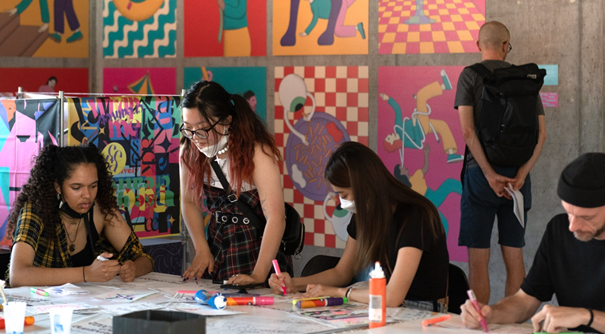At a glance
For: students
Topics: Flexibility, individual study design, design seminars, feedback formats
Location: Offenbach University of Art and Design
Space for individual artistic/creative development
The HfG places great emphasis on enabling its students to pursue independent studies according to their interests and areas of focus, as well as their personal circumstances, and to provide space for individual artistic and creative development. The flexibility offered by the Bachelor's and Master's programs introduced in 2022 was systematically expanded in its design. With the new elective modules, the HfG allows its students to design at least one semester's worth of coursework entirely independently and autonomously. Despite this emphasis on flexibility, students may encounter material or organizational obstacles in their daily studies. The QuiS program systematically identifies these obstacles and addresses them, where possible, to ensure continuous improvement. The absence of formal requirements entails a particular degree of self-responsibility for the students. Therefore, QuiS funding is also used to empower students by providing clear structures and processes, informational materials, and other resources to fully utilize the opportunities offered by independent study.
The students have formulated three major concerns:
- Making options visible, especially at the interface of the two disciplines of art and design
- student workspaces
- Accessibility
At the students' own suggestion, these concerns will be addressed through design seminars, in order to utilize the university's own expertise and creative resources to solve the identified challenges. Further funds are earmarked for student parliament projects.
Furthermore, feedback formats are designed and implemented using QuiS funds to better understand students' living and study situations and to identify student needs regarding flexibility. A coordination office supports the flexibilization of studies and its communication at the interface between lecturers, students, departmental offices, and various administrative staff.
Contact person in
Helena Schmedt , Offenbach University of Art and Design



